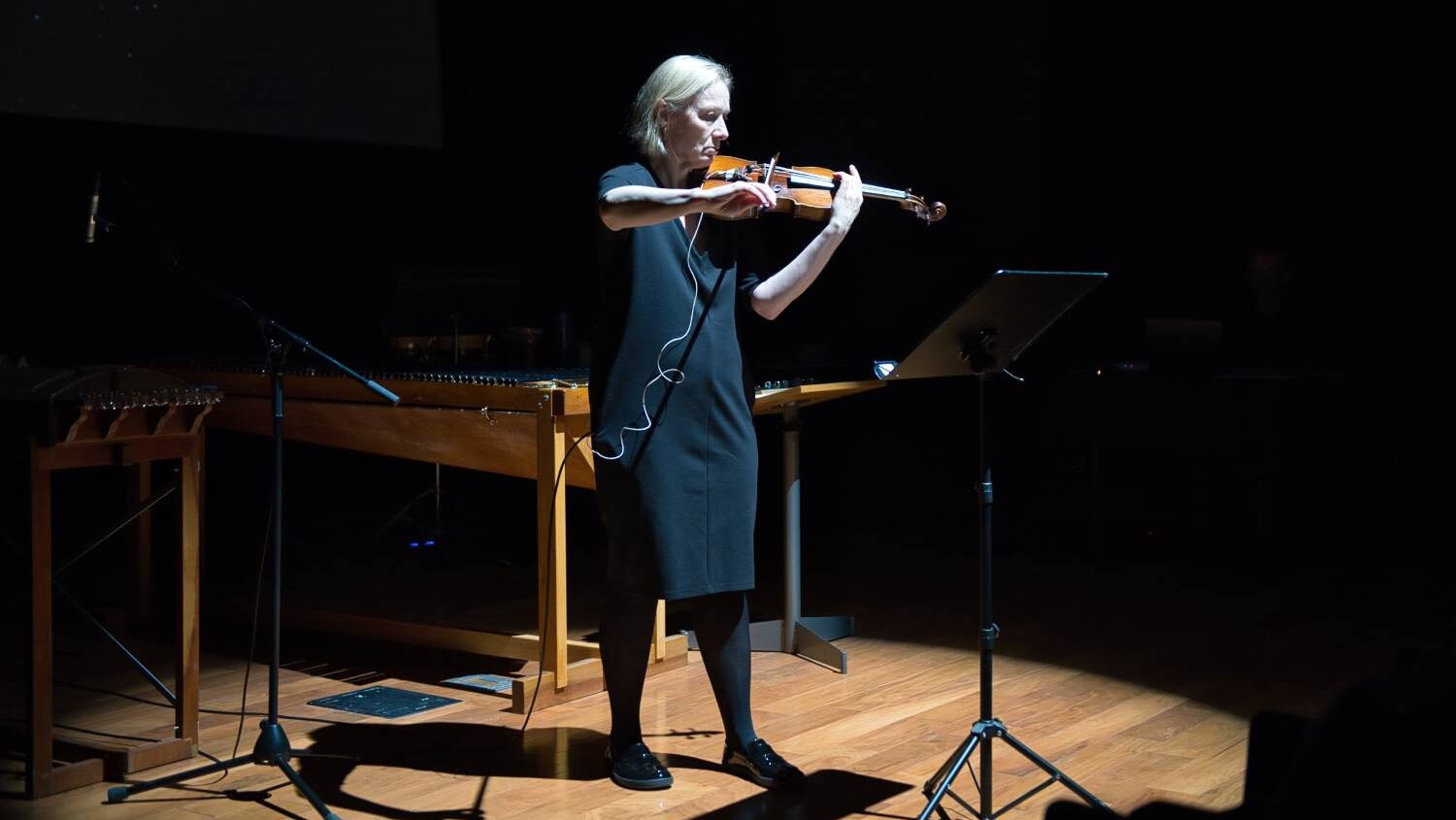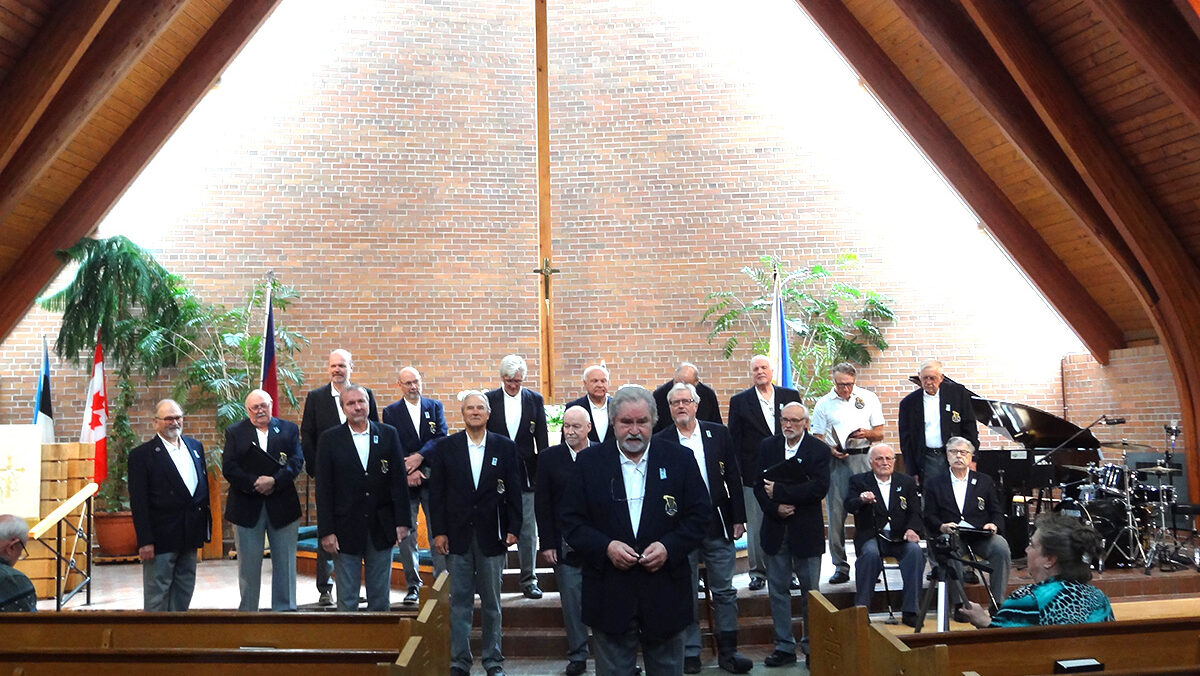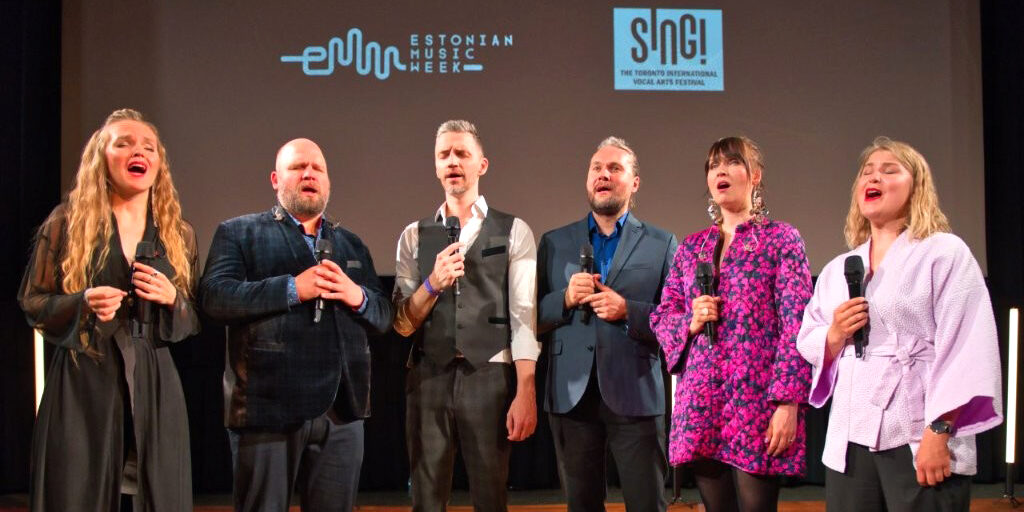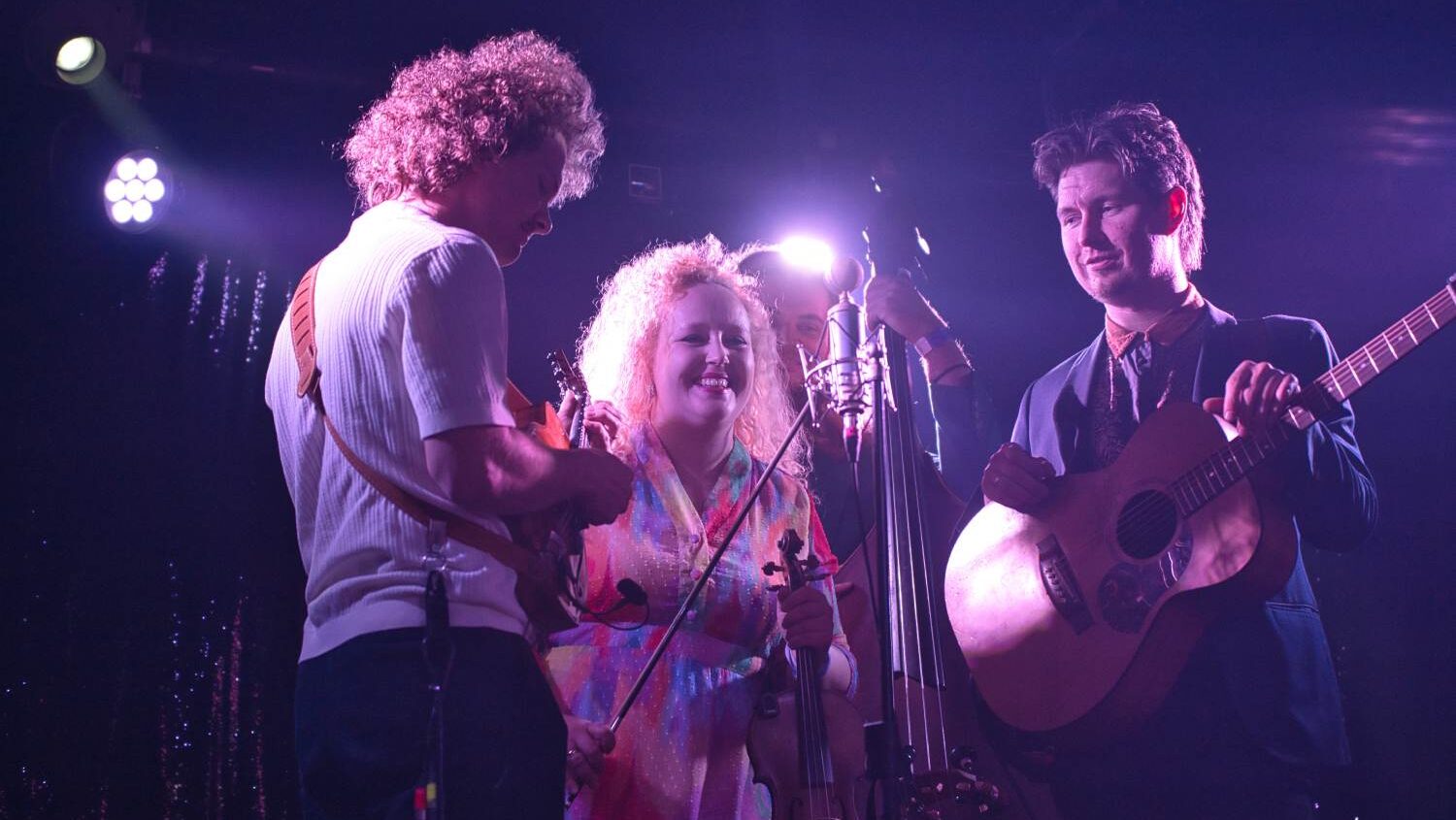The contemporary classical music group Ensemble U: are experts on the avant-garde music of Estonian-Canadian composer Udo Kasemets. The group presented movements from Kasemets’ Timetrip to Big Bang and Back, returning the piece to Toronto in a single-work concert at Innis Town Hall. Timetrip is a piece about gazing into the cosmos and seeing the past, finding at the furthest limits of distance the beginning of the universe. This semantic aspect of the piece was highlighted by an augmented reality component, where planets and stars would fly by on listeners’ cell phone screens.
The piece featured two microtonal instruments designed by Canadian musician Gayle Young—the amaranth and columbine—so named based on the number of petals on those varieties of flower, corresponding to the number of unique pitch classes attainable on the instrument. At a moment of crystallization towards the end of the piece, a clear rhythmic pulse was finally established by four percussionists. Even with large temporal distance between musical events, the grid of time was maintained in listeners’ minds, evoking the quantum mechanical landscape of the subatomic particles of the section’s title “Hadrondo” (a portmanteau of “hadron” and “rondo”).

Photo gallery
Later in the evening at Trinity-St. Paul’s United Church, the Estonian choir Vox Clamantis presented a Gregorian chant-inspired program of all Estonian composers, among whom Helena Tulve and Riho Esko Maimets were in attendance. The interpretation of Arvo Pärt’s music was light and at times quicker than usual (“Magnificat”). The ensemble’s potential for perfect tuning was best on display in Veljo Tormis’ “Meelespea”(“Forget-Me-Not”), a piece familiar to singers preparing for this year’s Estonian Song Festival. Tulve’s “Gloria” used traditional scales in excitingly non-traditional ways, and Lembit Avesson’s“Jõuluöö” (“Christmas Night”) refreshed the aural palette with classic, beautiful harmony.
A familiar choral texture was reached by the final minutes, but the greatest feat was accomplished in the early sections, piquing the listener’s fascination in such little pitch space using creative harmony and a glissando vocal technique.”
The concert featured a premiere of Maimets’ “Kõik inglid taeva valguses” (“All Angels in the Light of Heaven”), a further complement to the unison chants heard intermittently throughout the concert. Opening with a single tone and gradually incorporating notes by semitone step in both directions, the piece wove in a narrow pitch range for much of its duration. A familiar choral texture was reached by the final minutes, but the greatest feat was accomplished in the early sections, piquing the listener’s fascination in such little pitch space using creative harmony and a glissando vocal technique.
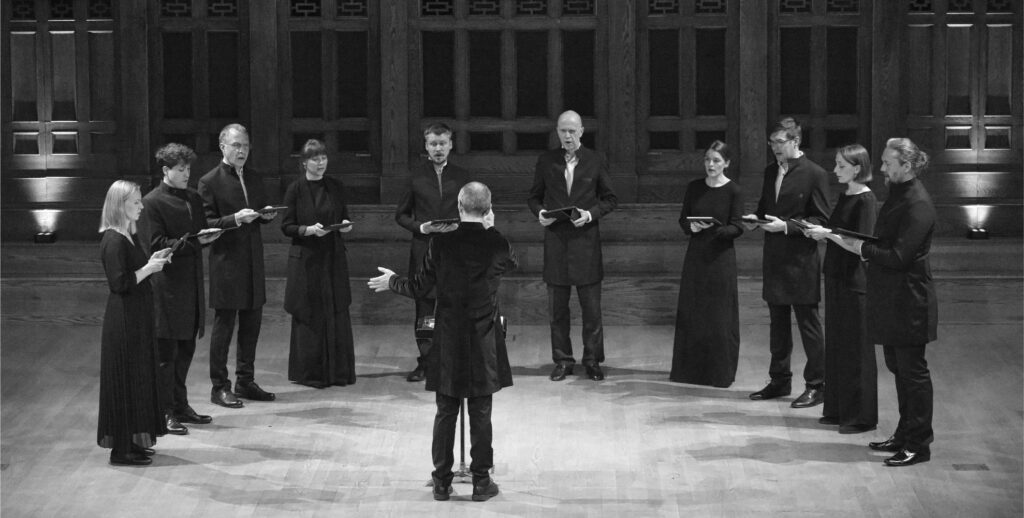
“Ave Maria” by Vox Clamantis’ own Tõnis Kaumann also received its Canadian premiere, a clearly chant-inspired piece featuring Gregorian modes and an organum-like texture that brought the concert to a cohesive yet contemporary end. Cyrillus Kreek’s “Kui suur on meie vaesus” (“In Penury”) and “Morning Star” by Arvo Pärt were added as encores.
